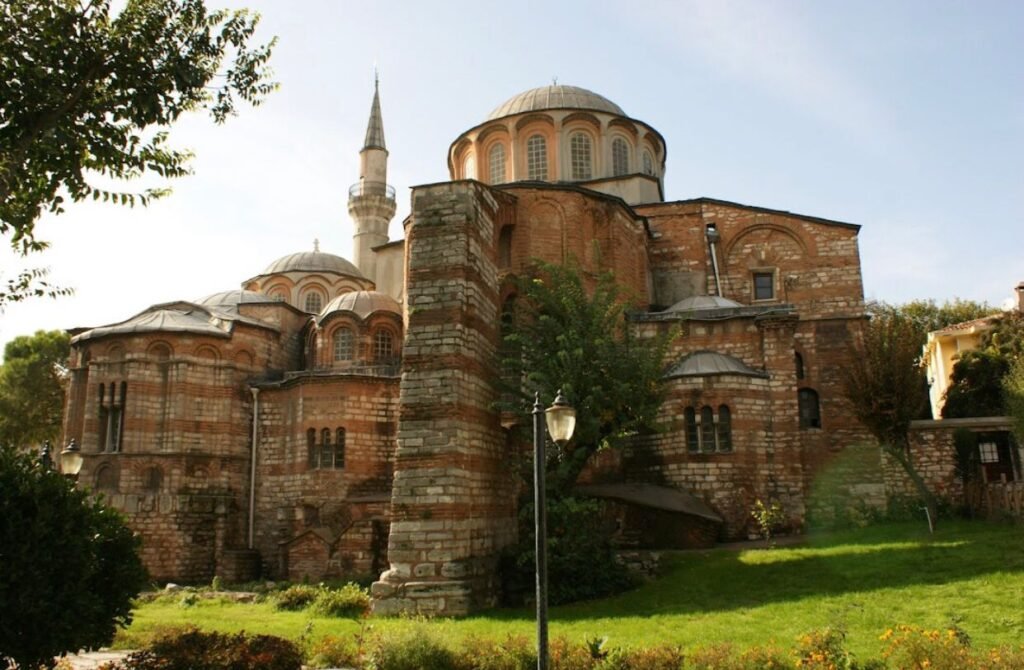Description
The Chora Church (Kariye Museum): A Timeless Gem in the Heart of Istanbul
Nestled in the vibrant district of Fatih in Istanbul, the Chora Church (known as Kariye Museum in Turkish) stands as one of the finest examples of Byzantine art and architecture. This stunning landmark, with its intricate mosaics and frescoes, offers visitors a glimpse into the rich cultural and historical tapestry of Istanbul. Once a functioning church, later converted into a mosque, and eventually a museum, it now serves as a mosque again, embodying the layered history of this city where East meets West.
Historical Background
The Chora Church's history dates back to the early Byzantine era. Originally constructed outside the ancient city walls of Constantinople, the word "Chora" translates to "countryside" in Greek, reflecting its original rural setting. However, as Constantinople expanded, the church became part of the city's vibrant core.
The current structure owes much of its splendor to Theodore Metochites, a Byzantine statesman and scholar, who restored and adorned the church in the early 14th century. His vision brought the dazzling mosaics and frescoes that are the hallmark of the Chora Church today.
After the Ottoman conquest of Constantinople in 1453, the church was converted into a mosque in 1511, and its Christian imagery was covered to comply with Islamic practices. In 1948, it was secularized and transformed into a museum, allowing the public to admire its extraordinary art once more. In 2020, it was reconverted into a mosque, yet its cultural significance remains intact, drawing visitors from around the world.
Architectural Marvels
The Chora Church is relatively small compared to other Byzantine structures like the Hagia Sophia. However, its intimate scale only adds to the charm, allowing visitors to fully appreciate the intricate details of its art.
The church comprises three main sections:
- Narthex: The entrance area adorned with mosaics that depict the genealogy of Christ and stories from the Gospels.
- Naos (Main Hall): The central area of worship, with a domed ceiling featuring a mosaic of Christ Pantocrator (Christ Almighty).
- Parekklesion: A side chapel dedicated to funerary purposes, covered with frescoes that illustrate scenes of the Last Judgment and the Resurrection.
The building's exterior is modest, with its brick façade showcasing the understated elegance of Byzantine architecture. Inside, however, the walls and ceilings come alive with vibrant colors and intricate imagery.
Mosaics and Frescoes: Windows into Byzantium
The Chora Church is best known for its mosaics and frescoes, which are considered some of the most important and well-preserved examples of Byzantine art in the world. These artworks were created during the Palaiologan Renaissance, a period of artistic revival in the Byzantine Empire.
Key Highlights
- The Christ Pantocrator Mosaic: Located in the dome of the naos, this mosaic portrays Christ as the ruler of the universe. Surrounded by figures of prophets and saints, it’s a powerful representation of Byzantine religious art.
- The Virgin and Child Mosaic: Found in the apse, this touching image of Mary holding the infant Jesus is a masterpiece of devotional art.
- Cycle of the Life of the Virgin: In the inner narthex, mosaics depict episodes from the Virgin Mary’s life, from her birth to the Annunciation.
- The Anastasis Fresco: In the parekklesion, this fresco shows Christ lifting Adam and Eve from their tombs, symbolizing the Resurrection. It’s one of the most iconic images in Byzantine art.
These artworks not only display exceptional craftsmanship but also serve as visual storytelling devices, offering insights into the religious beliefs and cultural values of the Byzantine Empire.
A Living Heritage
The Chora Church has undergone many transformations over the centuries, reflecting the changing dynamics of Istanbul. Its transition from a church to a mosque, then a museum, and again a mosque, mirrors the city's complex history. Despite these changes, it continues to attract visitors from all over the world, drawn by its artistic brilliance and historical significance.
As of today, the building operates as a mosque, but its mosaics and frescoes remain intact and can still be admired. Visitors are advised to check the current guidelines for visiting hours and accessibility, especially considering its status as a functioning religious site.
Practical Information for Visitors
- Location: The Chora Church is located in the Edirnekapı neighborhood of Fatih, Istanbul. It’s easily accessible by public transportation, including buses and metro.
- Visiting Hours: Since it is a mosque, visiting hours may be limited during prayer times.
- Dress Code: As with all mosques, modest clothing is required. Women may need to cover their heads, and shoes must be removed before entering.
Conclusion
The Chora Church is more than just a historic building; it’s a symbol of Istanbul’s unique cultural and historical legacy. Whether you’re an art enthusiast, a history buff, or a curious traveler, a visit to this magnificent site is sure to leave a lasting impression.
From its humble beginnings as a countryside chapel to its current status as a revered landmark, the Chora Church stands as a testament to the enduring beauty and complexity of Istanbul's heritage. Don’t miss the opportunity to step into this remarkable world of Byzantine art and history when you visit the enchanting city of Istanbul.
Location
-
Derviş Ali, Kariye Cami Sk. No:18, 34087 Fatih/İstanbul






